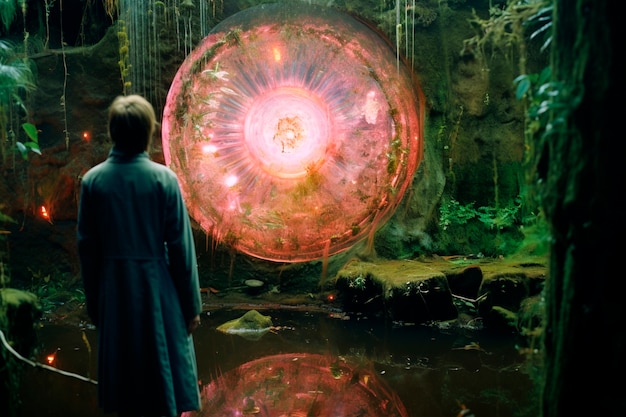
Most of us are familiar with the story of Sleeping Beauty, either from childhood readings or the classic Disney movie. In the film “Maleficent,” directed by Robert Stromberg, this beloved tale is reimagined with a fresh and empowering twist. Stromberg’s version transforms a traditionally male-dominated story into one that celebrates female strength and empowerment, flipping the original symbolism on its head with thoughtful writing and intention.
In an interview for Very Aware Magazine, Stromberg expressed his intent to explore the darker aspects of the fairy tale, contrasting with Disney’s lighter portrayal. He highlights the often-overlooked tragic elements in traditional Disney fairy tales, explaining that facing these dark sides is what makes finding the light so impactful.
“Maleficent” delves into the iconic villain’s backstory, presenting her in a manner that allows audiences to empathize and relate to her. Young Maleficent lives in The Moors, a fairy kingdom in conflict with a neighboring human realm. She befriends a human boy named Stefan after saving him from fairy retribution for stealing. Their friendship evolves into love, symbolized by what Stefan calls “true love’s kiss.” This setup humanizes Maleficent, moving away from the typical detached fairy archetype.
When Angelina Jolie takes over as the adult Maleficent, the emotional depth and struggles of the character come to life. Jolie’s performance is compelling, capturing Maleficent’s transformation from a joyful young fairy into someone driven by vengeance after Stefan’s betrayal. Stefan’s brutal act of cutting Maleficent’s wings to secure his place as king marks the beginning of her dark journey, turning her into the vengeful figure we recognize from the Disney classic. However, she is not alone in her quest; Diaval, her loyal raven assistant, plays a significant role in her story, acting as her eyes and ears, and sometimes, her conscience.
The pivotal christening scene, recreated almost verbatim from the original animated film, is critical in contrasting Maleficent’s dark persona with the pain and betrayal that shaped her. Unlike the traditional fairy who curses out of petty spite, Maleficent’s actions are driven by deeper emotional scars. Despite her vengeful intent, Maleficent’s journey towards redemption begins as she secretly cares for the cursed baby Aurora, fostering an unintended bond that softens her over time.
As Aurora grows, Maleficent’s secret guardianship transforms into genuine care, eventually vying for the role of a benevolent fairy godmother. This relationship starkly contrasts with the negligent care of the three fairies tasked with raising Aurora. Maleficent’s gradual change is poignantly depicted in scenes where her maternal instincts take precedence, showing her inability to remain indifferent to Aurora’s innocence and charm.
Stromberg cleverly touches upon themes of female empowerment throughout the film. King Stefan, obsessed with his rivalry with Maleficent, becomes the oppressive male figure, while Maleficent’s actions reflect a nurturing and protective nature. Aurora, though initially a pawn, grows into a symbol of unity and strength under Maleficent’s guidance. The climax sees Maleficent, not a prince, breaking the curse, highlighting her role as the true hero of the story.
Stromberg’s “Maleficent” redefines the classic tale, focusing on female strength and redemption. The film, bolstered by stellar performances from Angelina Jolie and Elle Fanning, deserves high praise for its innovative and empowering narrative. This revamped fairy tale champions girl power, making it a must-watch for fans of imaginative storytelling. What are your thoughts on this reinterpretation of a beloved fairy tale? Share your opinions below!

